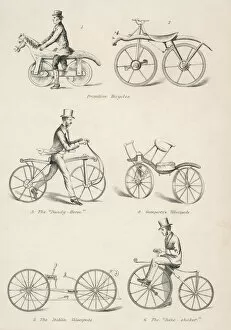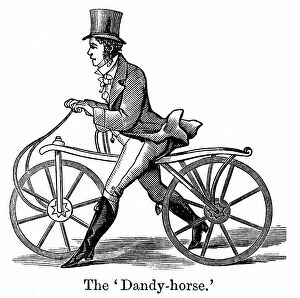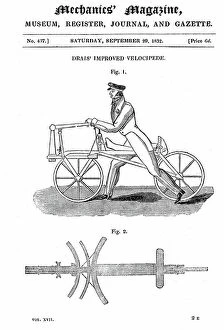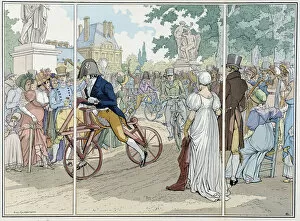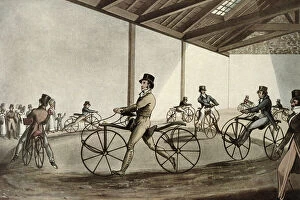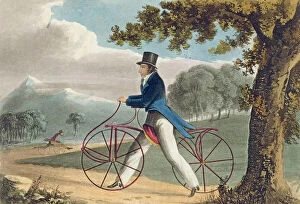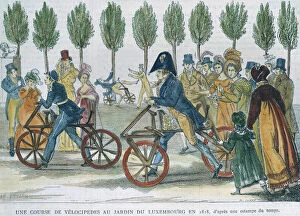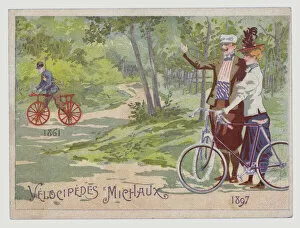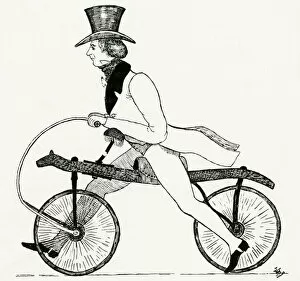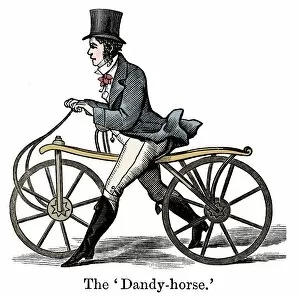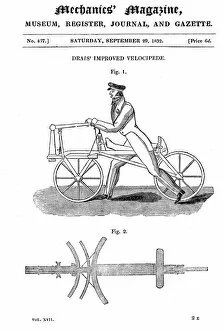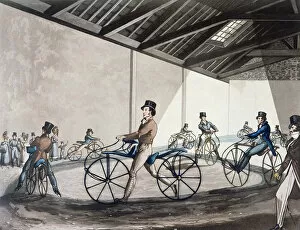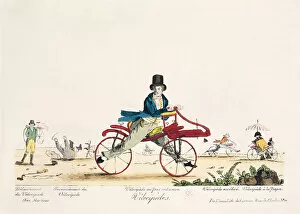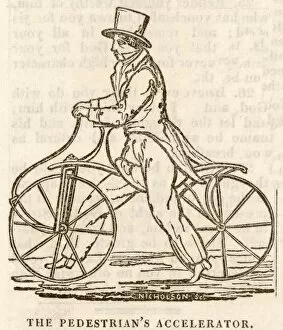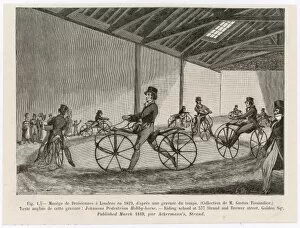Draisienne Collection
The draisienne, also known as the early bicycle, revolutionized transportation in the 19th century
For sale as Licensed Images
Choose your image, Select your licence and Download the media
The draisienne, also known as the early bicycle, revolutionized transportation in the 19th century. Invented by Baron Carl Drais von Sauerbronn in 1816, this two-wheeled vehicle paved the way for modern bicycles. Before the draisienne came into existence, people relied on horses or walked long distances to travel. The celerifer or draisienne changed everything. With its simple design and functionality, it quickly became a popular means of transport. Illustrations from "The Locomotion Through the Ages" by Octave Uzanne depict these early bicycles in action. Eugene Courbouin's artwork captures their unique charm and elegance. Other variations of the draisienne emerged over time. The Pedestrian Curricle patented by Dennis Johnson around 1819 added a touch of color to these vehicles with lithography techniques. Ackermanns Repository of Arts featured a Pedestrian Hobbyhorse in their publication from that same year. Velocipede races at Jardin du Luxembourg showcased the growing popularity of these innovative machines in 1818. An engraving from that era immortalizes this exciting event. As time went on, advertisements for Michaux bicycles appeared in chromolitho prints during 1897, showcasing how far this mode of transportation had come since its inception. Baron von Draiss' own bicycle was exhibited in Paris in 1818 and depicted through his artistic skills. This particular type became fashionable around 1820 and was commonly referred to as a Dandy-Horse or Draisienne. Innovation continued with new velocipedes emerging onto society's scene thanks to patents like those mentioned in "Long Live the Velocipede. " These inventions pushed boundaries and further improved upon earlier designs. Johnsons Pedestrian Hobbyhorse Riding School capitalized on this newfound fascination with draisienes by offering riding lessons starting from 1819 onwards according to a colorful lithograph.

